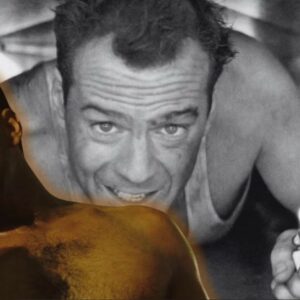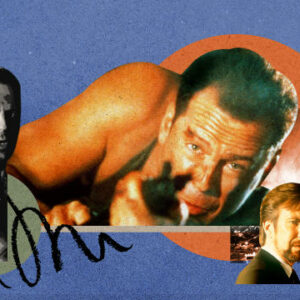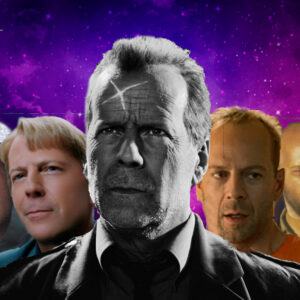Introduction
Cillian Murphy, known for his striking performances and magnetic screen presence, has a remarkable ability to transform into a wide range of characters. From the brooding anti-hero Thomas Shelby in Peaky Blinders to the tormented protagonist of A Quiet Place Part II, Murphy’s versatility is matched only by the mastery of costume and makeup in his roles. These elements are not mere accessories but pivotal tools in creating the essence of his characters. This article delves into how costume and makeup have been instrumental in Murphy’s transformation, exploring the significance of these elements in defining character traits and enhancing storytelling.
The Role of Costume Design
Costume design is a crucial element in film and television that extends far beyond aesthetics. It serves as a visual narrative device that helps define a character’s personality, era, and social status. For Cillian Murphy, costume choices have been essential in grounding his characters in their respective worlds and making them believable to audiences.
Defining Character Through Costume
Costumes are often the first visual cue we receive about a character. They can signify social status, personality traits, and even psychological states. For example, in Peaky Blinders, the costumes worn by Murphy’s character, Thomas Shelby, are more than period-accurate attire. They are integral to understanding his role as a cunning and ambitious gangster. The iconic flat caps, tailored suits, and long overcoats not only reflect the post-World War I setting but also embody Shelby’s complex persona—a man of both refined taste and ruthless ambition.
The meticulous attention to detail in Shelby’s wardrobe helps to establish his authority and command respect. The sharp lines of his suits signify his control and sophistication, while the occasional ruggedness of his clothing hints at his readiness to confront violence. These costume choices contribute significantly to Murphy’s portrayal, reinforcing Shelby’s status as a man caught between two worlds—one of high society and one of crime.
Costumes as Historical Markers
Murphy’s role as Robert Fischer in Inception demonstrates how costumes can anchor a character in a specific historical and cultural context. Fischer’s formal business attire, with its sleek lines and modern cut, reflects the corporate world he inhabits. This attention to sartorial detail not only aids in portraying his character’s professional status but also contrasts with the dreamlike, surreal environments of the film. The costumes help to ground the character in reality, making his struggles and ambitions more relatable to the audience.
In Dunkirk, Murphy plays a soldier in a historical context where costume design becomes an essential narrative tool. The film’s authenticity is enhanced by the accurate representation of military uniforms from World War II. Murphy’s character, along with his fellow soldiers, is dressed in historically accurate gear that reflects the era’s utilitarian needs. The worn, distressed look of the uniforms emphasizes the harsh realities of war, contributing to the film’s immersive experience.
Costume Design as a Reflection of Personal Growth
Costumes can also mirror a character’s development throughout a story. In The Wind That Shakes the Barley, Murphy portrays a revolutionary fighting for Ireland’s independence. His transformation from a civilian to a soldier is marked by a shift in costume—from simple, everyday attire to more rugged, military clothing. This evolution in his wardrobe symbolizes his internal journey and the impact of the war on his identity.
In A Quiet Place Part II, Murphy’s character Emmett is introduced as a man who has lost everything. His disheveled appearance, marked by torn and worn clothing, contrasts sharply with the more polished looks of other characters. This visual representation of his grief and survival instincts adds depth to his role, making his eventual alliance with the protagonist more poignant.
The Impact of Makeup
While costume design plays a pivotal role in character transformation, makeup is equally crucial in shaping an actor’s appearance and enhancing their performance. For Cillian Murphy, makeup is not merely about altering physical features but about contributing to the overall persona of the character.
Makeup for Physical Transformation
In 28 Days Later, Murphy’s character, Jim, undergoes a dramatic physical transformation from a comatose patient to a man battling a post-apocalyptic world. The makeup used to depict Jim’s emaciated and weakened state is essential in conveying his struggle and the harsh conditions he faces. The application of makeup in this instance is not just about changing Murphy’s appearance but about visually representing the character’s physical and emotional trauma.
Similarly, in The Dark Knight, Murphy’s portrayal of Dr. Jonathan Crane (aka Scarecrow) is enhanced by the use of prosthetics and special effects makeup. The character’s ghastly appearance—marked by a disfigured face and eerie eyes—helps to create a sense of dread and menace. The makeup transforms Murphy into a chilling villain, effectively supporting his performance and heightening the film’s atmosphere.
Makeup for Psychological Depth
Makeup can also be used to explore a character’s psychological depth. In The Party, Murphy’s role as a disillusioned politician is complemented by subtle yet effective makeup choices that highlight his weariness and inner conflict. The slightly disheveled look, combined with a pallid complexion, reflects his character’s mental state, enhancing the portrayal of his emotional turmoil.
In Red Eye, Murphy’s role as a menacing terrorist is accentuated by makeup that emphasizes his intense, piercing eyes. This choice heightens the tension and suspense in his interactions with the protagonist, showcasing how makeup can be used to amplify psychological nuances and make a character’s intentions more palpable to the audience.
Collaboration Between Actors and Makeup Artists
The synergy between actors and makeup artists is crucial in achieving a seamless transformation. Murphy’s ability to collaborate with makeup professionals, understanding how their work complements his performance, has resulted in some of his most memorable roles.
For example, in The Dark Knight Rises, the makeup and prosthetics used to create Bane’s menacing appearance are integral to the character’s imposing presence. Murphy’s role as the character is not directly involved with Bane’s transformation, but his understanding of the importance of makeup in creating a believable antagonist underscores his professionalism and commitment to his craft.
The Evolution of Murphy’s Roles
Murphy’s career has seen an evolution in the roles he chooses, and his collaborations with costume designers and makeup artists have played a significant role in this evolution. As he takes on more complex and varied characters, the sophistication and intricacy of costume and makeup design have likewise advanced.
In The Imitation Game, Murphy’s portrayal of a WWII codebreaker is enhanced by a costume and makeup design that accurately reflects the era while also conveying the character’s mental strain. The attention to detail in his wardrobe and makeup helps to create a believable and nuanced portrayal, showcasing the continued growth in Murphy’s roles and the collaborative efforts that support his transformations.
Conclusion
Cillian Murphy’s ability to inhabit diverse and complex characters is a testament to his talent and dedication as an actor. However, his transformations would not be as impactful without the meticulous work of costume designers and makeup artists. These elements are essential in defining his characters, reflecting their personalities, historical contexts, and psychological depths.
Costume design and makeup are not mere embellishments but vital components that contribute to the storytelling process. For Murphy, they are instrumental in creating memorable and immersive performances that resonate with audiences. As he continues to take on new and challenging roles, the collaboration between Murphy and the teams behind his costumes and makeup will undoubtedly continue to produce exceptional and transformative characters.





